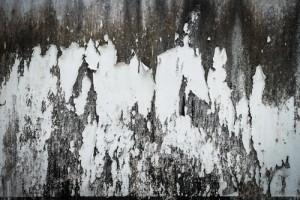
Mold forms in warm, moist conditions – the exact conditions caused by ice dams on Boston roofs. While most molds are fairly harmless, black mold is a little bit different. Black mold gets a lot of news coverage because it can cause more severe reactions in people than other types of mold and is quite aggressive and difficult to get rid of once established. The toxic kind of black mold is known as Stachybotrys chartarum or Stachybotrys atraand it can form as a result of ice dams on Boston homes.
Symptoms Associated With Black Mold
People with allergies or other respiratory ailments are at the most risk of suffering from mold in a home, although infants and children, the elderly, and those with immunocompromised systems are also at risk of developing symptoms. According to the CDC, indoor exposure to mold can:
- Cause upper respiratory tract symptoms such as coughing and wheezing.
- Exacerbate asthma and COPD symptoms or trigger attacks.
- Cause respiratory illness in children, even those with no known allergies.
- Cause hay-fever like symptoms like stuffy nose, watery eyes, and skin irritations.
- Cause fungal infections in people with immune suppression disorders or lung disease.
- Cause severe reactions like fever and shortness of breath
There have also been reports of more serious effects associated with long-term, continuous exposure to black mold. These include:
- Cancer
- Hypersensitivity pneumonitis/pulmonary fibrosis.
- Pulmonary injury/hemosiderosis.
- Neurotoxicity
- Hematologic and immunologic disorders.
- Hepatic, endocrine and/or renal toxicities.
- Gastrointestinal and/or cardiac conditions.
The good news is, once the mold has been removed from the home, symptoms disappear.
Black Mold And Ice Dams On Boston Homes
Mold needs excessive moisture in order to take root. That’s why it is such a concern with ice dams in Boston. Ice dams cause leaks in roofs, walls, and ceilings and provide a source of constant moisture inside the home. As these materials absorb water inside your warm home, they form the perfect habitat for black mold, which feeds on the cellulose that makes up these materials. While you can replace damaged walls and drywall, the mold will come back unless the source is removed. Ice dam removal on a Boston home is the only way to take out the source of the moisture that is causing the mold.
Tips For Mold And Ice Dam Removal In Boston Homes
If you do find mold in your home, don’t panic. If no one is having any symptoms, you aren’t in any immediate danger. Keep in mind that many molds look black in color. This does not make them Black Mold. The best course of action is to clean up the mold using a bleach solution of 1 cup of bleach per 1 gallon of water. Then, correct the moisture problem that led to the mold in the first place. If there is an ice dam, contact us for ice dam removal in Boston right away. Without ice dam removal, Boston homes will continue to have excessive moisture coming into the home and the mold will keep coming back. Once the ice dam has been taken care of, you may need to replace damaged materials, particularly if they are absorbent or porous. To learn more about ice dam removal in Boston or to arrange for a consultation, call us!
